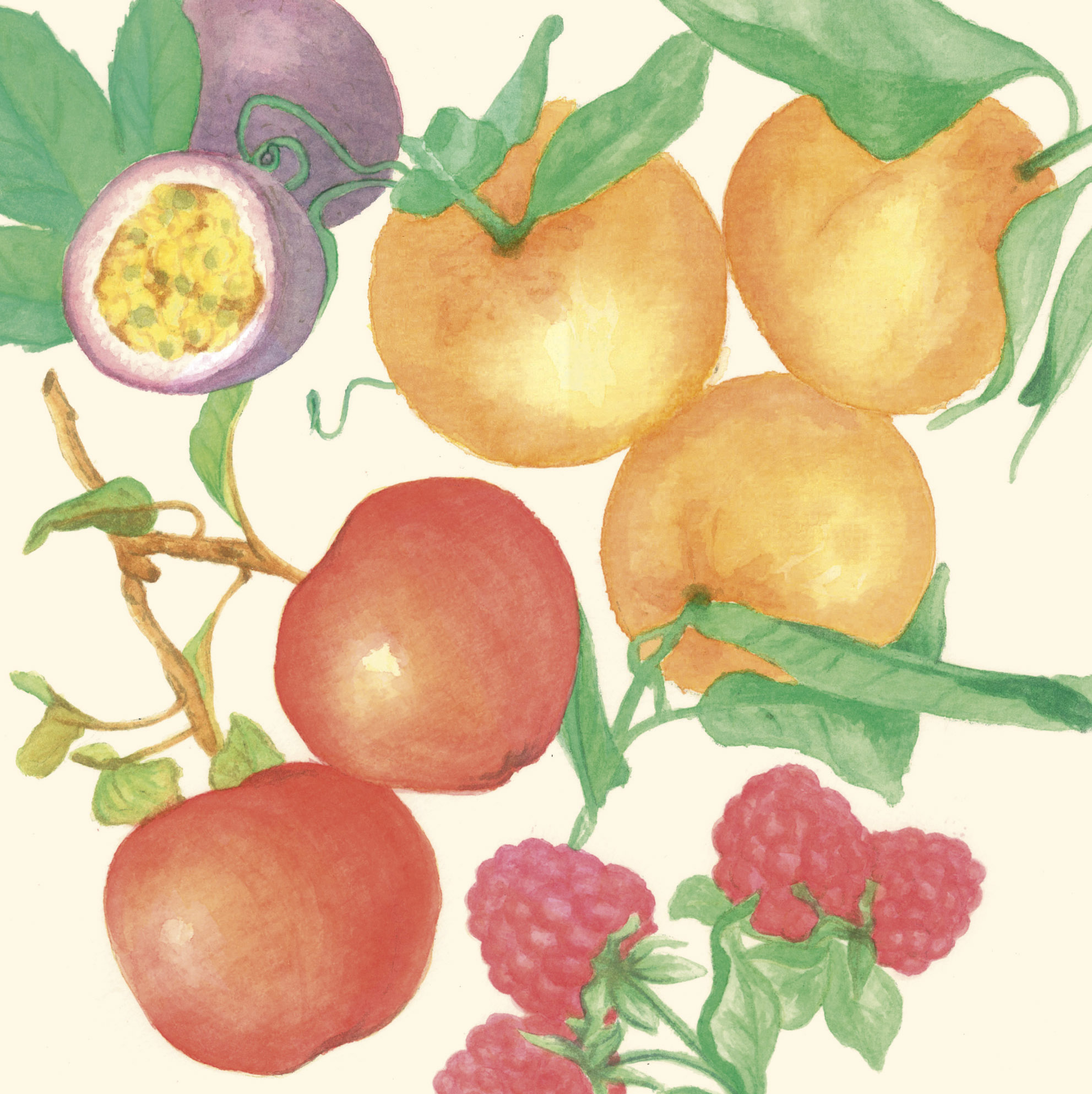Take these top tips for growing fruit plants and you’ll soon be like a kid in a candy store.
Words Kahu de Beer. Illustrations Lisa Lodge
Imagine being the first person to discover fruit, strolling through the wilderness and seeing raspberries for the very first time – little bright-coloured jewels dotted among green foliage. And then the taste, the sweetness. Fruit truly is nature’s candy. I never cease to be amazed that a plant can produce such perfectly designed treats for us. The shapes, colours, tastes, all of it is pretty spectacular. And if pure enjoyment wasn’t enough, it’s also bursting with nutrients for our bodies.
We are spoilt for choice in New Zealand in the types of fruit we can choose from to grow at home. Go with some of your favourites while also considering what you have the time and space for.
Who doesn’t love being able to eat stunning produce from their own garden?
Some know-how
- Plant according to your climate. Growing pineapples in Queenstown may seem like a great idea but won’t be a very rewarding venture. Look at which fruit will grow best in the climate you’re in. Also consider the aspect of your property as this will determine how much sun your plants will get.
- Know your plant’s pollination requirements. Many fruit trees are self-fertile but others will require two varieties of the same species, or will need another pollinator such as bees.
- Decide on ripening times. Consider the fruiting seasons of different plants and choose them accordingly. Depending on your climate you may be able to plan it so that you have a fruit supply much of the year.
Berries
Boysenberries, raspberries, blackberries, blueberries.
Plant these types of fruit close to the house for easier access – you’ll be eating them daily when their fruit is ripe. You’ll need to keep a close eye on them when their fruit starts to ripen (it’s often a race between you and the birds). Berries like full sun to make flavourful and sweet fruit. Taller berries will benefit from being grown against a fence or wall, away from strong winds. To create nutrient-rich soil, dig in organic matter such as compost or sheep pellets before planting. There are also specific garden mixes for berries.
Best to plant Blueberries can be planted year round. Plant several as this will help with pollination. Boysenberries, raspberries and blackberries can be planted in winter or spring.
Citrus
Lime, lemon, orange, grapefruit.
Citrus thrive on a lot of feeding. Getting a specifically designed citrus food mix is a good idea to ensure they get the nutrients they need. Epsom salts can also be applied around the tree to correct magnesium deficiencies, which are particularly common in citrus. By feeding your citrus in spring and summer you will encourage maximum fruiting and flowering. Give them plenty of water over the summer months. Mulch citrus trees in spring and then again in late summer, this will help to retain soil moisture.
Best to plant in autumn or spring so trees will be established before summer heat, or cold winter months. Will fruit in the winter months, though you can have lemons most of the year if you have several varieties.
Passionfruit
Passionfruit are subtropical so need lots of sun and water, especially during flowering and fruiting seasons. They also require light, free draining soil – sand can be added to the soil to help with this. Passionfruit, like citrus, are big feeders – dig through plenty of compost before planting, and then liquid feed regularly, particularly when flowering and fruiting.
Best to plant in the spring after last frost. Fruit will ripen from mid-summer.
Orchard fruits
Apples, peaches, pears, nectarines, plums.
It’s easy to underestimate the size your fruit tree may grow to; make sure you leave at least four to five metres between trees when planting. Fruit trees do best when planted in a north-facing, sheltered position where they will get direct sun for at least six hours each day. Sunshine is crucial as it helps start flower production. Fruit trees generally prefer fertile, free-draining soil, although some will tolerate heavier soils. Adding organic matter like compost or straw will improve the soil structure and fertility. By getting rid of weeds and grass beforehand your new plant won’t have to compete for water and nutrients. If you don’t have much planting space or would prefer to plant in pots or containers there are many dwarf varieties of fruits available. It might feel wrong but it’s a good idea to remove any fruit that your plant produces in the first year – this will help the tree to get established and will pay off in better fruiting the following seasons. Pruning your fruit trees in winter, when they are dormant, will encourage new fruiting branches to grow. This also lets light into the tree and removes any diseased parts. Use sharp secateurs and cut slightly above each growth bud.
Best to plant between autumn and spring. Fruiting seasons will vary depending on variety of plant.





